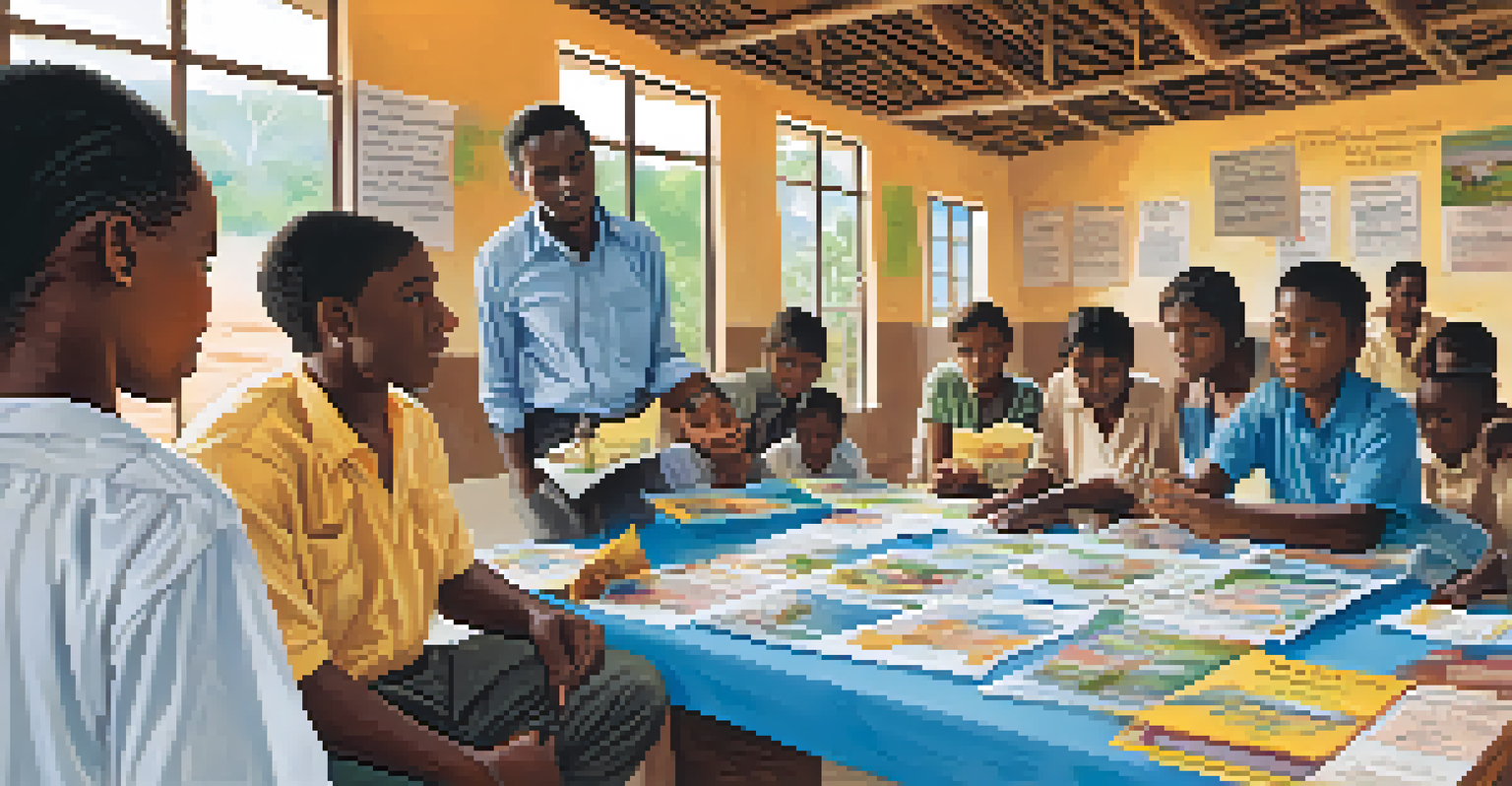Schistosomiasis: Lifecycle, Symptoms, and Treatment Options

What is Schistosomiasis and Its Global Impact?
Schistosomiasis is a parasitic disease caused by flatworms of the genus Schistosoma. It primarily affects people in tropical and subtropical regions, with over 200 million cases worldwide. The disease is often linked to poor sanitation and limited access to clean water, making it a significant public health concern.
The health of the people is really the foundation upon which all their happiness and all their powers as a state depend.
People become infected when they come into contact with contaminated water, where the larval forms of the parasite, called cercariae, penetrate the skin. Once inside the body, these parasites migrate to various organs, leading to a range of health issues. Understanding the global prevalence of schistosomiasis is crucial in tackling its impact on communities.
Efforts to combat schistosomiasis include improving sanitation and hygiene practices, as well as public health education. By raising awareness about this disease, we can encourage preventive measures and reduce transmission rates.
The Intricate Lifecycle of Schistosoma Parasites
The lifecycle of Schistosoma is fascinating and complex, involving both human hosts and freshwater snails. Initially, adult worms reside in human blood vessels, where they produce eggs that are expelled through urine or feces into water. If these eggs reach a suitable freshwater environment, they hatch, releasing larvae that seek out specific snail hosts.

Once inside the snail, the larvae undergo several developmental stages, eventually transforming into cercariae, which are released back into the water. This is where the cycle continues, as humans come into contact with contaminated water and become infected. The interplay between humans and snails is vital for the survival and spread of schistosomiasis.
Global Prevalence of Schistosomiasis
Schistosomiasis affects over 200 million people worldwide, primarily in tropical and subtropical regions, due to poor sanitation and access to clean water.
Understanding this lifecycle is essential for developing effective control strategies. Targeting both human and snail populations can help interrupt the transmission cycle, ultimately reducing the incidence of this debilitating disease.
Common Symptoms of Schistosomiasis to Watch For
Symptoms of schistosomiasis can vary widely depending on the species of Schistosoma and the stage of infection. Early symptoms may include itchy skin or a rash at the site of cercariae penetration, often mistaken for an allergic reaction. As the infection progresses, individuals may experience abdominal pain, diarrhea, and blood in urine or stool.
An ounce of prevention is worth a pound of cure.
In chronic cases, the disease can lead to severe complications, such as liver damage, bladder cancer, or even kidney failure. Symptoms can be debilitating, affecting a person's quality of life and ability to work or attend school. Recognizing these symptoms early can facilitate timely diagnosis and treatment.
If you suspect you’ve been exposed to contaminated water, seeking medical attention is crucial. Early intervention can prevent the progression of the disease and minimize long-term health issues.
How Schistosomiasis is Diagnosed by Healthcare Providers
Diagnosing schistosomiasis typically involves a combination of clinical evaluation and laboratory tests. Healthcare providers start by reviewing the patient's medical history and potential exposure to contaminated water sources. This initial assessment can provide valuable clues to guide further testing.
Laboratory tests often include the examination of stool or urine samples for the presence of Schistosoma eggs. In some cases, blood tests may be conducted to detect antibodies produced in response to the infection. Accurate diagnosis is essential for determining the appropriate treatment plan and managing the disease effectively.
Lifecycle Involves Humans and Snails
The Schistosoma lifecycle is complex, requiring both human hosts and freshwater snails, which play a crucial role in the transmission of the disease.
It’s important to consult a healthcare professional if you exhibit symptoms or have a history of exposure to contaminated water. A timely diagnosis can lead to better outcomes and prevent complications related to schistosomiasis.
Treatment Options for Schistosomiasis Explained
The primary treatment for schistosomiasis is the antiparasitic medication praziquantel, which is effective against all Schistosoma species. This medication works by killing the adult worms and is usually administered in a single dose or over a short course. Most patients experience significant improvements in symptoms after treatment.
In addition to antiparasitic drugs, supportive care may be necessary to manage complications caused by the disease. This can include treatments for liver damage, urinary issues, or secondary infections. A comprehensive treatment approach helps ensure long-term health and recovery.
Preventive measures, such as health education and access to clean water, are also crucial in reducing the incidence of schistosomiasis. Communities can work together to implement effective strategies to minimize the risk of infection and improve overall public health.
Preventing Schistosomiasis: Key Strategies to Consider
Preventing schistosomiasis largely revolves around improving water safety and sanitation practices. Communities can reduce the risk of infection by avoiding contact with contaminated water and ensuring proper sanitation facilities are in place. This is especially important in areas where the disease is prevalent.
Health education plays a vital role in prevention, as raising awareness about the risks associated with schistosomiasis can encourage safe behaviors. Teaching communities about the lifecycle of the parasite can help individuals understand the importance of avoiding infested water sources.
Prevention Through Education and Care
Improving sanitation, raising awareness, and implementing community education are key strategies to prevent schistosomiasis and reduce its impact.
Additionally, snail control measures, such as environmental management and biological control, can be effective in reducing snail populations. By implementing a combination of strategies, we can work towards eliminating schistosomiasis and its impact on vulnerable populations.
The Importance of Community Awareness and Education
Community awareness and education are essential components in the fight against schistosomiasis. By informing individuals about the disease's transmission, symptoms, and prevention strategies, communities can empower themselves to take proactive measures. Education initiatives can significantly reduce infection rates and improve overall public health.
Collaborative efforts between health organizations, local governments, and community leaders can facilitate the dissemination of information. Workshops, pamphlets, and local campaigns can effectively reach those at risk, fostering a culture of prevention and awareness.

Ultimately, an informed community is better equipped to combat schistosomiasis. By prioritizing education and awareness, we can create healthier environments and reduce the burden of this disease on affected populations.